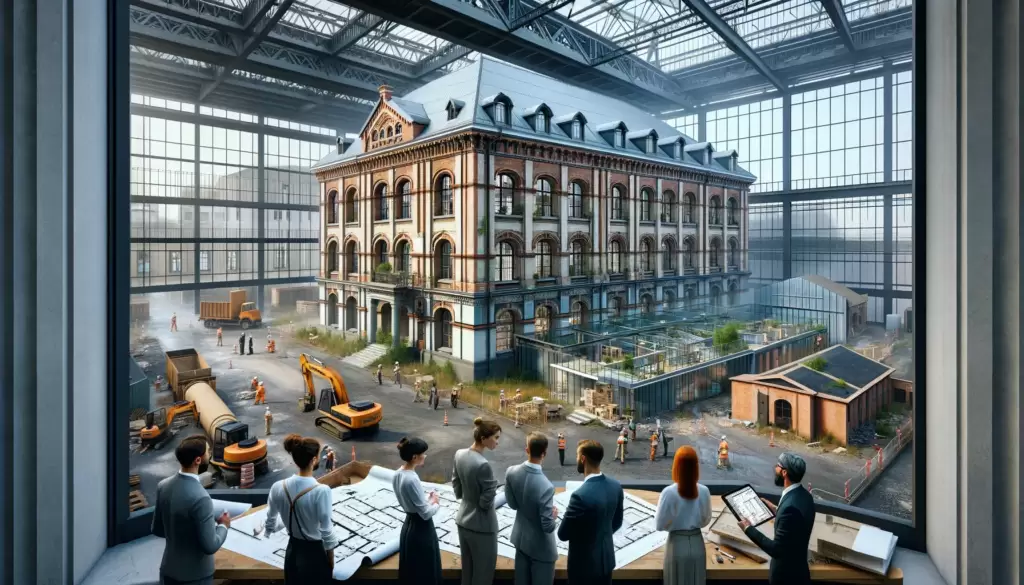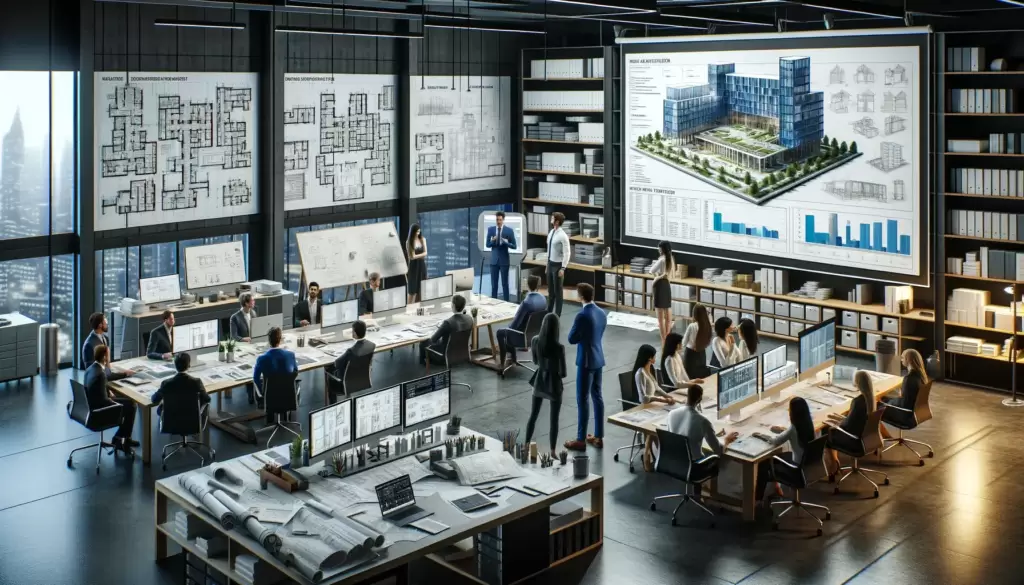
Table of Contents
Introduction
The concept of adaptive reuse in architecture has become a crucial approach in addressing the challenges of urban development and sustainability. It involves the transformation of existing structures into new, functional spaces with careful consideration for their historical and cultural significance. By repurposing old buildings, architects can not only reduce the environmental impact of construction but also preserve the unique character and stories embedded within these structures.
Adaptive reuse projects offer a dynamic platform for architects to blend innovation with heritage, creating spaces that not only serve contemporary needs but also resonate with a sense of history. The process requires meticulous planning, thoughtful design interventions, and a deep understanding of the building’s context. As such, it challenges architects to navigate the complexities of preserving original features while infusing modern functionality—a delicate balance that demands creativity and strategic vision.
Understanding adaptive reuse in architecture
The concept of adaptive reuse in architecture embodies the creative and sustainable transformation of existing structures, breathing new life into old spaces. It not only minimizes waste and environmental impact but also celebrates the unique character and history of a structure. By repurposing buildings for modern needs, architects can preserve cultural heritage while meeting contemporary demands, fueling a dynamic interplay between past and present.
One key aspect of understanding adaptive reuse is the notion of storytelling through design. The layers of history within a building can add depth to its new function, creating an immersive experience that connects people to the space in meaningful ways. Additionally, embracing the innate structural qualities of an existing building often leads to innovative design solutions that emphasize authenticity and sustainability. As architects navigate the complexities of adaptive reuse projects, they must embark on a journey that harmonizes preservation with adaptation, resulting in spaces that honor their past yet serve future generations with purposeful innovation.
Researching historical and cultural significance
Researching the historical and cultural significance of a potential adaptive reuse project is an essential step in ensuring the preservation of the building’s heritage while also embracing innovation. By delving into the historical context, architects can uncover valuable insights that can inform their design approach, allowing them to seamlessly blend modern functionality with traditional charm. Understanding the cultural significance of a building enables architects to respect and celebrate its heritage, creating spaces that resonate with local communities and visitors alike.
Moreover, researching historical and cultural significance fosters a deeper appreciation for the stories embedded within a structure. This knowledge not only adds layers of meaning to the architecture but also provides a unique storytelling opportunity through design. By weaving together past narratives and present functionalities, architectural projects can become living testaments to history, enriching their surroundings with depth and character. Embracing this research process as an integral part of adaptive reuse projects enables architects to create captivating spaces that honor tradition while paving the way for an innovative future.
Assessing structural integrity and feasibility
Assessing the structural integrity and feasibility of a building for adaptive reuse is crucial in ensuring the success of the project. This involves conducting thorough inspections to understand the existing condition of the structure, including its materials, load-bearing capacities, and potential weaknesses. By leveraging advanced technology such as 3D scanning and structural analysis software, architects can gain deeper insights into the building’s capabilities and limitations, ultimately informing their design decisions.
Furthermore, it’s essential to consider not only the current state of the building but also its potential for future transformation. This requires a holistic approach that takes into account not just the physical aspects but also environmental impact and regulatory considerations. Engaging with experts in various fields such as engineering, sustainability, and urban planning can provide valuable input that enhances the overall feasibility assessment. By adopting an integrated approach to structural assessment, architects can unlock new possibilities for adaptive reuse projects while ensuring that they align with contemporary construction standards and best practices.
Design considerations for adaptive reuse projects
When approaching adaptive reuse projects in architecture, it’s crucial to carefully consider the design aspects that can make or break the success of the project. Understanding the historical significance and context of the existing structure is paramount, as it informs decisions on how to integrate new design elements while preserving the building’s original character. Incorporating sustainable and energy-efficient design features is also essential, aligning with modern standards and reducing environmental impact.
Furthermore, reimagining spaces to meet contemporary needs without compromising their authenticity requires a thoughtful approach. This involves considering factors such as functionality, accessibility, and flexibility in the design process. By embracing innovative solutions that honor the building’s heritage while embracing modern demands, architects can breathe new life into old structures and contribute to sustainable urban development.
Sustainability and environmental impact
We live in a time where the concepts of sustainability and environmental impact are no longer just buzzwords, but essential considerations in every facet of life. When it comes to adaptive reuse projects in architecture, these principles take on a new level of significance. By repurposing existing structures instead of building anew, architects can greatly reduce the environmental impact of their projects. This approach not only minimizes construction waste but also preserves the embodied energy and history of the original buildings.
Furthermore, sustainable adaptive reuse promotes a more holistic view of design by valuing the inherent character and context of a site. By taking into account factors such as natural lighting, ventilation, and material longevity, architects can create spaces that are not only environmentally responsible but also enhance the well-being of their occupants. Ultimately, embracing sustainability in adaptive reuse projects challenges architects to think beyond surface-level aesthetics and consider the long-term implications on both the built environment and our planet at large.
Conclusion: Embracing the potential of adaptive reuse
In conclusion, embracing the potential of adaptive reuse in architecture is not just a practical solution but also a significant step towards sustainable urban development. By repurposing existing structures, architects have the opportunity to preserve the cultural and historical significance of buildings while reducing their environmental impact. This approach encourages creativity and innovation as it challenges designers to think outside the box, finding new ways to breathe life into old spaces.
Moreover, adaptive reuse projects have the potential to revitalize communities by injecting new energy into underutilized areas. Instead of demolishing and rebuilding, this approach honors the past while looking towards the future, fostering a sense of continuity and respect for our built environment. Ultimately, pioneering in adaptive reuse can lead to more meaningful architecture that resonates with people on a deeper level and contributes to a more sustainable and vibrant urban landscape.




